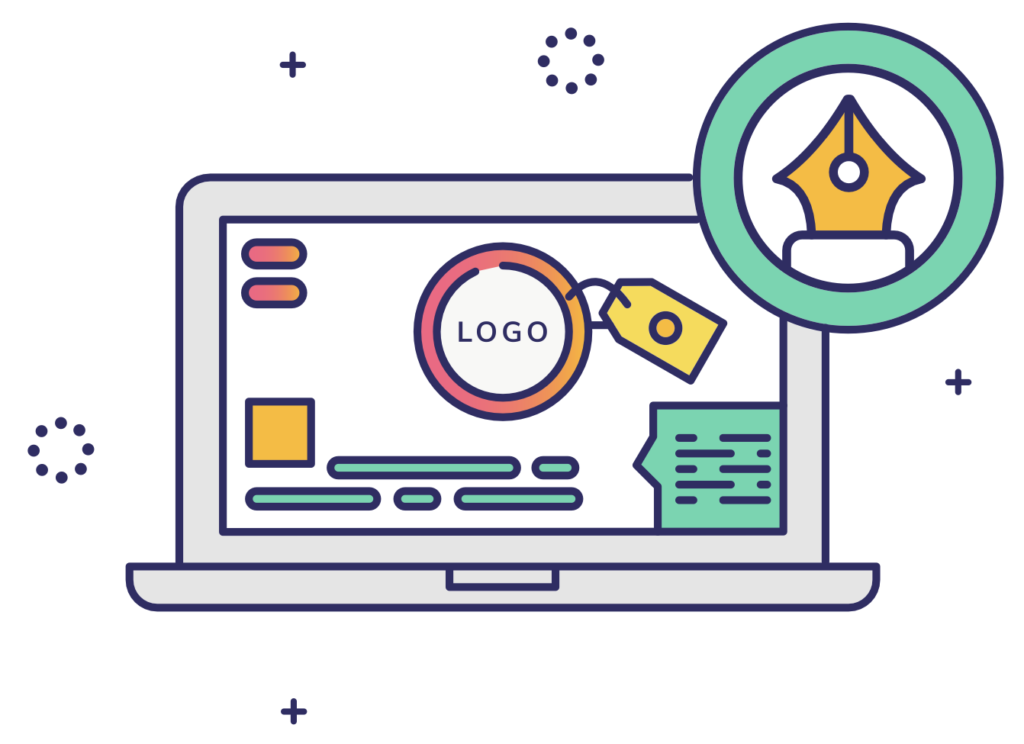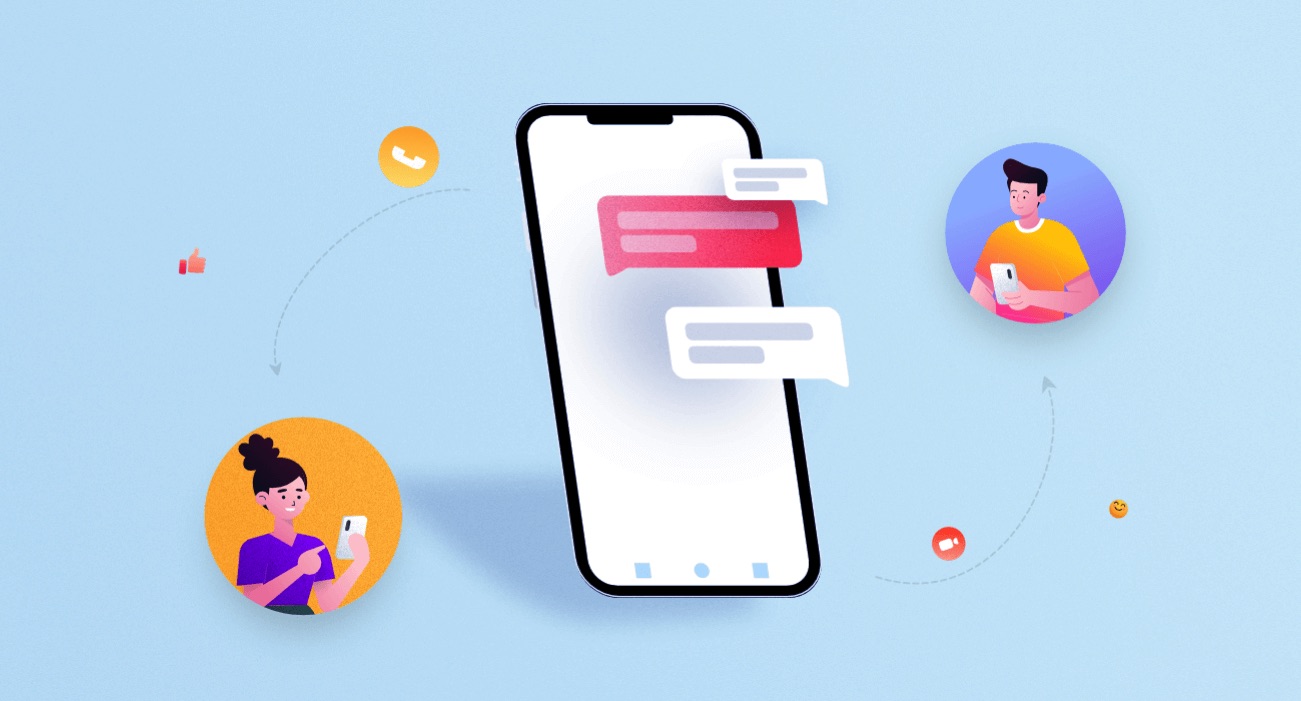Each year entrepreneurs of every niche spend thousands of dollars building their brand; the identity, awareness, voice, tone… But how much of this actually becomes an investment, and how much of it ends up an expense?
To be fair, this question could be considered somewhat loaded.
Given the vast diversity of marketing niches, each business will deem different parts of their marketing plan as beneficial depending on their own unique experiences while in operation.
So, to accurately answer this question about your own business you will have to understand the difference between branding assets and your general branding and marketing materials.
Follow along as we discuss some of the most advantageous branding assets around today that can help you conquer your competition and rise to the top of your niche!

What are Branding Assets?
Branding assets are marketing materials, physical, digital, and audible, that are used to promote a company’s products, services, and overall brand identity.
Branding assets are not confined to a certain type of media or area of the marketing strategy but, to be considered an asset, they must have a high level of impact on the brand’s overall marketing efforts.
According to Ehrenberg-Bass Institute for Marketing Science (UniSA), the difference between branding assets and general branding materials lies in the individual elements’ addition to the brand’s uniqueness and level of recognition or fame.
Uncover Your Unique Branding Assets
Trying to identify a unique branding asset amongst a sea of historically great marketing materials can be somewhat difficult.
To make your job a little easier, try narrowing down your list of potential branding assets with these quick tips!
- First, try to include only the elements that are the most impactful and relevant to your brand alone. Ask yourself: Could this element/item conjure up images of competitors’ products as well as my own?
- If the answer is yes, unfortunately, that element of your marketing strategy or plan is not considered to be an asset.
The point of an advertisement is to reinforce your brand’s market authority and validity. After seeing your ad you want your viewers to be in their cars and on their way to find you, and only you!
Trying to encourage personal brand awareness by advertising with generalized images of burgers, fries, or pizza is a common mistake for small business owners with small budgets and little branding experience.
If McDonald’s was looking through their branding portfolio, the image of the Big Mac would definitely be on the first page; but this juicy image alone wouldn’t be considered a strong branding asset.
But, why? Aren’t Big Macs exclusively from Micky D’s?
For fast food lovers that prefer McDonald’s, the sole image of the Big Mac may be enough to get them moving. But for those that prefer other burger joints like In’N’Out, Freddy’s, or Burger King, the sole image of a Big Mac might just make them want a burger in general.
Attracting more than the Big Mac lovers, McDonald’s focuses on their strongest branding assets: the golden arches and their current slogan: “Ba Da Ba Ba Bah – i’m lovin’ it!”
You may not love their Big Macs, but after hearing their little ditty on the radio – doing five miles over the speed limit sounds worth it for one of their vanilla iced coffees! Take my money, Ronald!
Side Note: Quickly relatable items should be kept consistent throughout your marketing across all platforms unless you are of course rebranding or phasing out those branding elements.
When making the original list of potential assets, be sure to include original branding strategies that have been successful in the past as well as creative and modern marketing ideas that can be built upon in the future.
Original jingles, product sounds, logo colors, and image styles that have been used by your brand for a long time are great elements to keep the nostalgia alive for longtime customers.
Next, cut your extra branding synonyms. Ask yourself: What branding elements do we currently use that could replace or supplement our brand name in our branding materials?
If removing redundant branding items sounds backward, try reading the following sentence at a normal pace: The chicken walked across the road to the chicken’s doctor because the chicken had a cut on the chicken’s foot and the chicken needed stitches.
Now, let’s try reading it with some pronouns: The chicken walked across the road to her doctor because she had a cut on her foot and she needed stitches.
In the first sentence, there is so much time and energy being wasted on reiterating something that’s already been established. Your brain can feel just as overloaded when it sees an image that’s plastered with multiple branding messages at once.
Your branding assets list doesn’t need to be long, it just needs to be clear, authentic, and unique to your brand.

Identify Your Fame-Boosting Branding Assets
While it’s important to be able to differentiate between marketing materials and branding assets, it’s equally critical to know which assets are the most advantageous for your market authority and reputation.
Another way to tell if your branding element is one of your general, run-of-the-mill brand marketing materials or one of your fame-boosting brand assets is by determining what that element is truly reinforcing. Meaning, what is that particular element’s main purpose in the overall marketing plan.
Some of the best branding assets reinforce the idea that, even if the name of the product in question becomes replaced with the name of your brand, no one else can do it better.
Let’s say you were asked if you wanted a cookie. Such an ambiguous question could prompt mental images of snickerdoodles, chocolate chips, sugar, or oatmeal raisins. Depending on your own personal preference, you could’ve thought about brands like Famous Amos, Chip-Ahoy, Entenmenns, or Keebler.
But, what if someone asked you if you wanted an Oreo?
Without a doubt, your brain wasted no time envisioning the mega-stuffed black and white confection with sweet creme filling pressed between two round chocolate wafer cookies. Because there is only one Oreo. Or is there?
If you’re an Oreo-lover like us, you might be surprised to learn that the first chocolate and creme sandwich cookie was not Oreo. Released in 1908, the Oreo cookie was originally called a Hydrox cookie.
Oreo’s branding team has done and continues to do, such an amazing job with their product branding efforts that the image of the famous black and white sandwich cookie solely evokes the beloved name Oreo, while the name of the original chocolate sandwich cookie has lapsed.

The Importance of Strong Branding and Marketing Assets
Strong branding and marketing assets are important because they reinforce your market identity and pave the way for future consumers to freely and happily attribute important parts of their lives to your brand.
Branding and marketing assets that encourage popularity and market authority are going to be your strongest assets. They are going to be what turns your branding expenses into branding investments.
Because what’s the point of spending thousands on advertising if no one knows what – or who – the commercial is about?
You want the people watching your commercial to think, “I want to try their toilet paper!”, not, “Oh, yea! I need to grab some toilet paper! I wonder if Charmin is on sale…”
Strong branding assets will ensure that even if a consumer sees only a portion of your ad they’ll know it was for you.
The Complete Branding Assets List
Excluding your basic branding assets like the brand logo, font, and style, each company’s branding asset list will be different.
The elements that end up making it onto your branding assets list will ultimately be determined by the type of branding and marketing strategies you decide to use.
Whether your marketing director supports the emphasis of inbound marketing over outbound marketing, or vice versa, the most important factor for your brand asset is that it is unique to your brand. And, this is more than advertising aesthetics and catchy jingles.
Unique branding assets can also be derived from services or benefits that your company provides to its customers and employees.
Publix, a supermarket found predominantly in southern states across the US, has set itself apart from its competition with special company stock benefits that are available exclusively to their employees.
Since 1970, Publix has been using its ‘employee-owned designation as a unique and authentic way to show its appreciation to the employees and community. Even though the general public has no access to these benefits, this gesture provides a small look inside their company culture. Customers can expect a level of care and personal responsibility from the employees, and the employees feel motivated to provide the best service possible.
The elements of your brand that highlight your individual mission, company culture, or marketing strategy – the little and big things that make your customers and employees choose you over your competitors – are your branding assets.
Examples of Real Branding Assets
Let’s apply the above information and take a look at a scenario that happens thousands of times a day all over the U.S.
Think about your typical trip to the local grocery store.
As you work your green Publix cart back and forth through the aisles, you look at your list and realize you’re down to the last two items: Tide Pods and Pringles.
Already cutting it close to your little one’s soccer game, you quickly maneuver your squeaky wheels to aisle 15; also known as ‘The Snack Shack’.
Your eyes move up and down, quickly scanning the items on the shelves; searching for the skinny cans of salty duck lips. Thankfully, it doesn’t take long to notice the wall of cylindrically shaped chip cans in the sea of square chip bags!
After a second of indecision, you snag your favorite Pringles flavor and you’re on your way to the detergent aisle.
Already envisioning yourself grabbing the round, orange tub they come in, you feel like you’re almost out of there! But as you turn the corner of aisle 11 you’re caught off-guard with a small section of new products that speak loudly to your environmentally friendly heart.
Although the bright orange tubs are within your peripheral vision, you stop to check out the newest addition to the cleaner line-up on the top shelf. The container seems more progressive and the ingredients sound more natural and organic, too.
You think, “It is a little pricier, but this might be a great alternative. I don’t know, though.” Unfortunately, time is of the essence and the reliable Pods are watching…
It looks like the underdog will have to wait. Easily grabbing the well-known and recognizable orange tub of Tide Pods placed at eye-level, you head over to the register and get to little Michael’s game with time to spare!
Just in this one scenario alone, there were multiple marketing and branding strategies used by each company.
For Tide, the shape and color of their product allows their customers to readily identify their products, even at the other end of the shelf. The placement strategy makes it easy for customers of all ability types to reach their product.
Pringles not only have a distinct shape and texture to their chips, but they also protect this asset with another genius branding asset: the noticeably unique shape of their chip cans. Each of these branding elements makes them stand out amongst their competitors.
Other examples of famous branding assets that exist outside the grocery store are the Liberty Mutual LiMu Emu, Amazon’s shipping box packaging, Nike’s swoosh, the M&M’s characters, and the pink and orange color scheme for Dunkin’.

Set Your Business Up for Success with Memorable Brand Assets!
Consumers are becoming more conscious of advertising strategies every day.
Customers are aware that businesses utilize branding and marketing tactics to try and catch the eyes of potential buyers. Successful brands have realized that ensuring they enjoy the selling process is an important part of the game.
Allow our marketing professionals the opportunity to help you identify the distinguishing characteristics of your brand – your brand assets – and highlight them in a way that provides a great customer experience while encouraging brand loyalty. Our team will put pressure on the competition with comprehensive marketing and branding strategies unique to your brand journey.
Check out our branding and marketing services today to see how we can take random, unexplored sellers and turn them into treasured household brands.





